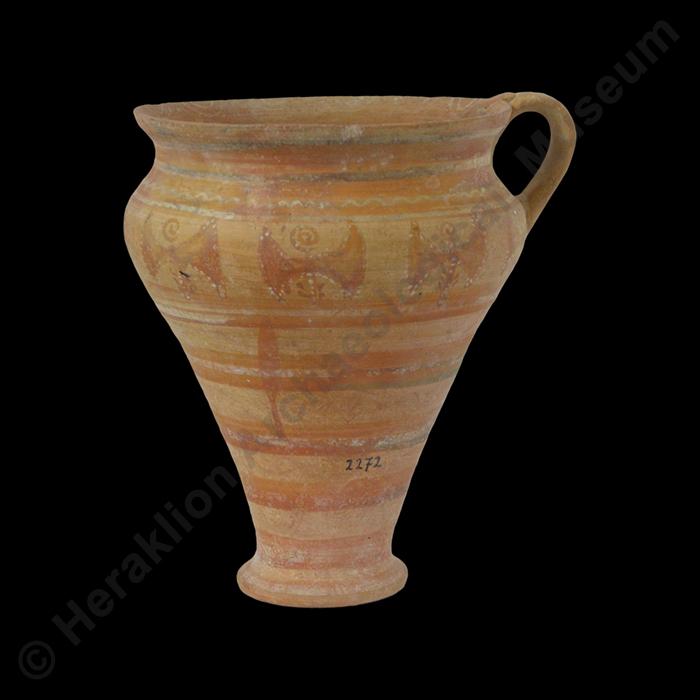Cup-rhyton with decoration of double axes
Π2272
Clay
Incomplete, mended and restored.
Height: 20 cm. Mouth diameter: 15.5 cm.
Zakros
House Α
Late Bronze Age. Neopalatial period, Late Minoan ΙB period.:
1500-1450 BC:
Gallery:
IVCase:
42Exhibition thematic unit:
Late Bronze Age - Neopalatial period (1700-1450 BC). The New Palaces. The zenith of Minoan civilisationArchanes Palatial Centre - Palace of Zakros
Description
Cup-rhyta are found in various shapes and sizes in the Neopalatial period. The pouring hole in the bottom was made before the pots were fired, indicating that they were intended to be used for decanting liquids or in special libation ceremonies. In the case of this rhyton from Zakros, its ceremonial use is reinforced by the decoration: in a zone on the upper body is a row of double axes, a highly symbolic theme in the context of Minoan religion and ceremonial practices. In keeping with the decorative trends of the time, the axes are painted in brown with white details on a light ground, combined with spirals and hafts represented by foliate bands. Some formal elements, such as the thin strap handle and the relief knob imitating a rivet head on its surface, may indicate the influence of similar vessels made of metal. Another, almost identical vessel comes from the palace of Zakros. As is the case with other types of rhyta, cup-rhyta of similar shape and decoration may have been produced by the same workshop and used in pairs in rituals in the context of Minoan cult practice.Bibliography:
Dawkins, R.M. "Pottery from Zakros". Journal of Hellenic Studies 23 (1903): 256, fig. 23. Koehl, R.B. Aegean Bronze Age Rhyta. INSTAP Prehistory Monographs 19. Philadelphia, Penn., 2006, 224, no. 1229.Author:
I. N.Photographs' metadata
